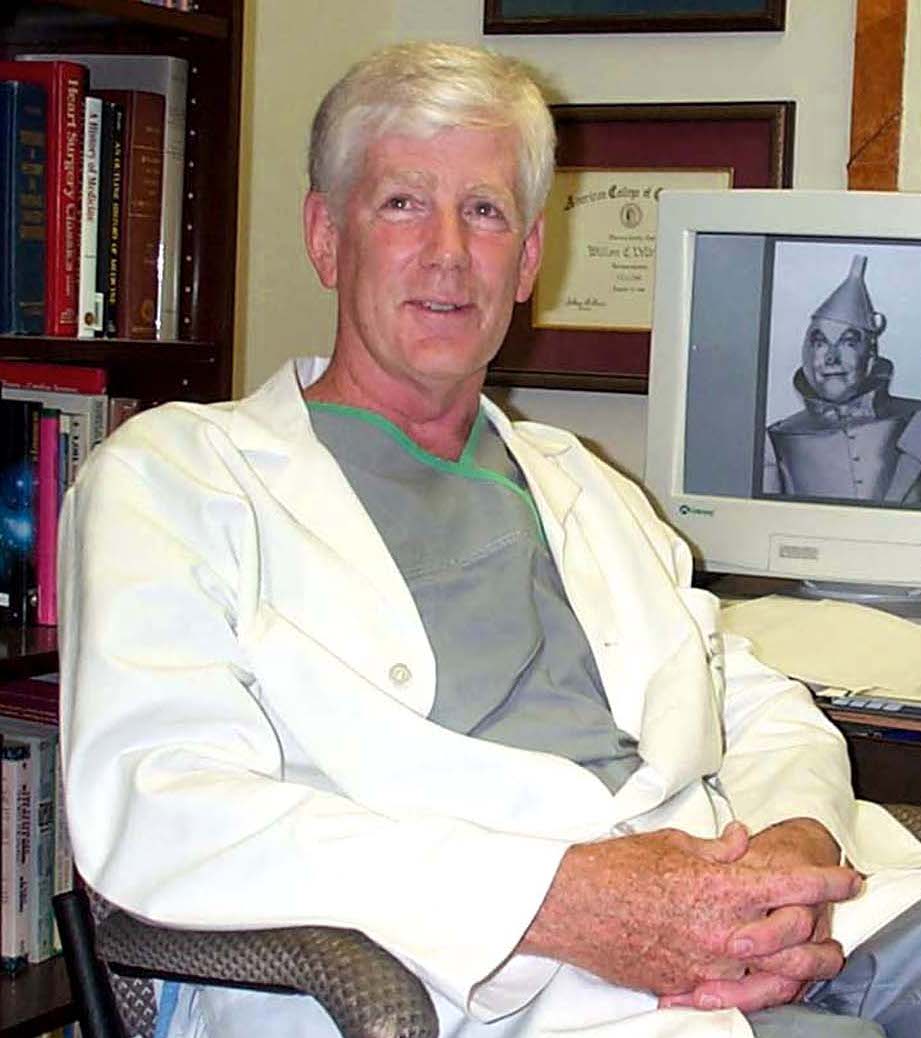William DeVries
William Castle DeVries is a pioneering American cardiothoracic surgeon known for the first transplant of a total artificial heart. He is a member of The Church of Jesus Christ of Latter-day Saints.
DeVries was born on December 19, 1943, in Brooklyn Navy Yard. His father, Henry DeVries, was a naval surgeon who died in combat on the destroyer USS Kalk in 1944 during the Battle of Hollandia in the South Pacific. DeVries was only six months old when his father died. His mother, Cathryn, who was a naval nurse, and his grandmother, who also was recently widowed, raised him alone until his mother remarried. His stepfather had eight daughters and eight sons, and the large family moved to Ogden, Utah.
DeVries stood out in high school on both the basketball and track teams. He won the Utah state finals in high jumping and attended to the University of Utah on a track scholarship. In 1966, he earned his bachelor’s degree in molecular and genetic biology. He earned his medical doctor degree from the U of U in 1970. As in high school when he had to work to provide his expenses, he worked three or four jobs during college to provide for himself and his wife, Ane Karen, and their four children. He graduated at the top of his class and received an award for the most outstanding graduate.
He left Salt Lake City in 1969 for his residency at Duke University. That same year, Doctor Denton Cooley attempted his first artificial heart transplant in a patient in Houston, Texas. His work was the inspiration for DeVries and his later work. At the end of his surgical training, he returned to Salt Lake City in 1979 to become the chairman of thoracic and cardiovascular surgery. He typically performed two to five open-heart surgeries a week.
At that time the University of Utah was one of the country's few pioneering centers for advanced surgery on vital organs and their transplanting and implanting into animals and humans. During his college days, he had worked with doctors Robert Jarvik and Willem Kolff. The lab calves that had received artificial hearts were able to live up to eight months. These results inspired him to take on with the work, and so he started a series of long-term animal experiments. After two years of experiments, DeVries and his colleagues tried to obtain the approval of the United States Food and Drug Administration and the National Institutes of Health. With signs that they were interested in his work, a panel of six professionals at the U of U Medical Center began searching for a patient.
On December 2, 1982, DeVries and Barney Clark made medical history. DeVries had been granted permission from the United States Food and Drug Administration to implant the polyurethane Jarvik-7 artificial heart in humans and performed the first transplant on Barney Clark, who was also a member of The Church of Jesus Christ. The operation was risky, but Clark, who suffered from congestive heart failure, decided to take the risk to help advance science. Clark didn’t expect to live more than a few days after the operation, but since doctors had determined he was too ill for a normal heart transplant, the artificial heart was his only hope for recovery.
Clark lived, but DeVries found it much harder to manage the device on a patient rather than on a healthy animal. Although some of the researchers wanted DeVries to turn off the device, he refused; this caught the attention of the media, and landed DeVries on the cover of Time Magazine (December 10, 1984).
To finance the ability to keep Clark alive, DeVries decided to sell the rights of his story to a newspaper for $1 million. Clark lived for 112 days after the surgery. He had never recovered well enough to leave the hospital.
DeVries and his team faced media and public pressure. He was bombarded with moral and ethical criticism and legal issues. DeVries wanted to go on with his trials, but funds were lacking and medical insurance was never going to pay for such an experimental transplant. Consequently, DeVries found himself fund raising, which, at the beginning did not succeed until Wendell Cherry, vice chairman of Humana, offered to finance the next 100 implants if DeVries relocated to Louisville, Kentucky. He accepted the offer.
Bill Schroeder was his second patient. He survived the surgery, and initially did well. Two weeks later, however, Schroeder suffered a series of infections and strokes that left him unable to speak. He was able to leave the hospital and did some normal activities. He lived for 620 days after the operation.
DeVries implanted a total of four artificial hearts. During 1987, surgeons all over the world substituted forty-nine diseased hearts with a Jarvik-7 model. In January 1988, DeVries was close to performing his fifth implantation, when a human donor heart was found for the patient. In January 1990, the FDA withdrew their approval and the FDA ended the program. One of the benefits of his work was that the total artificial heart was used as a bridge for patients who were waiting for a final transplant.
DeVries returned to traditional cardiovascular surgery in 1999. When he was contemplating closing his practice, Army Major General Evan Gaddis convinced him to join the Reserves. He joined Walter Reed Army Medical Center Department of Surgery as a consultant. In December 2000 at the age of 58, he completed the Officer Basic Course and joined the United States Army Reserve as a lieutenant colonel. He was stationed at Walter Reed where he taught surgical residents and medical students. He was also assigned to the 324th Combat Support Hospital in Perrine, Florida. He had tried to join the military during the Viet Nam war, but was declined because he was the sole surviving son of a man killed in action.
